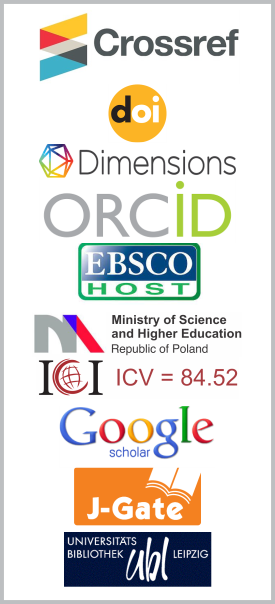Elemental Analysis of Commonly Consumed Rice in Nigeria using PIXE Technique
DOI:
https://doi.org/10.26713/jims.v9i2.743Keywords:
Elemental Concentration, PIXE, Rice, MalnutritionAbstract
This study investigated the essential element (P, Cl, K, Ca, Mn, Fe, Cu and Zn) concentra-tions of some local and imported rice commonly consumed in Nigeria. This is done in order to select the rice with high nutrient to combat malnutrition, especially in children. Proton-induced X-ray emission (PIXE) techniques available at iThemba Labs Someset West, South Africa was used for the analysis. The elemental concentration obtained for Ofada are \(8805.5\boldsymbol{\pm}221\), \(276.5\boldsymbol{\pm}32\), \(3704.5\boldsymbol{\pm}39\), \(212$\boldsymbol{\pm}8\), \(110.5\boldsymbol{\pm}8\), \(125.5\boldsymbol{\pm}7\), \(14.5\boldsymbol{\pm}1\) and \(44.5\boldsymbol{\pm}4\) ppm, while for the imported rice we got \(2862.5\boldsymbol{\pm}150\), \(399\boldsymbol{\pm}22\), \(1433\boldsymbol{\pm}28\), \(4.15\boldsymbol{\pm}2\), \(8.4\boldsymbol{\pm}0.8\), \(4.75\boldsymbol{\pm}1\) and \(9.5\boldsymbol{\pm}2\) ppm for P, Cl, K, Ca, Mn, Fe, Cu and Zn respectively. Phosporus (P) has the highest elemental concentration in all samples. Ofada, one of the local rice was found to have the highest elemental concentration while pure imported rice had the lowest concentrations of the elements. The study suggests that consumption of locally-cultivated (Ofada) rice should be encouraged in order to reduce malnutrition in children in Nigeria.Downloads
References
C. Chukwuma, Evaluating baseline data for copper, manganese, nickel and zinc in rice, yam, cassava and guinea grass from cultivated soils in Nigeria, Agric. Ecosystems Environ. 56 (1) (1995), 71 – 74.
L.R. Doolittle, A semiautomatic algorithm for Rutherford backscattering analysis, Nucl. Instrum. Meth. B 15 (1986), 227 – 231.
FAO, Rice in human nutrition, Food and Agricultural Organization and IRRI Rome, Italy (1993).
N.J. Lwambo and S. Brooker, Age patterns in stunting and anaemia in African school children: a cross sectional study in Tanzania, Eur. Jour. Of Clin. Nutr. 54 (1) (2000), 36 – 40.
Nigerian Daily Punch, Malnutrition in Children daily news of July 13, 2013.
J.M. Przybylowicz, M. Nakonieczny, P. Migula, M. Augustyniak, M. Tarnawska, W.U. Reimold, C. Koeberl, W. Przybylowicz and M. Glowacka, Uptake of cadmium, lead, nickel from soil and water solution by nickel hyperaccummulator Berkheya coddii, Acta Biol. Cracov. Bot. 46 (14) (2004), 75 – 85.
C.J. Ryan, Quantitative trace element imaging using PIXE and nuclear microprobe, Int. J. Imag. Syst. Tech. 11 (2000), 219 – 230.
R.J. Stoltzfus and J.D. Kvalsvig, Effects of iron supplication and anthelmintic treatment on motor and language development of preschool children in Zanzibar: double blind, placebo controlled study, Br. Med. Jour. 323 (7326) (2001), 1389 – 1393.
P.J. White and M.R. Broadly, Biofortifying crops with essential mineral elements, Trends. Plant Sci. 10 (2005), 586.
WHO, World Health Report: Make every mother and child count, World Health Organization, Geneva (2005).
S.J. Yeh and P.Y. Chen, Neutron activation analysis for trace elements in UN-polished rice, Anal. Chim. Acta 87 (1) (1976), 119 – 124.
Downloads
How to Cite
Issue
Section
License
Authors who publish with this journal agree to the following terms:- Authors retain copyright and grant the journal right of first publication with the work simultaneously licensed under a CCAL that allows others to share the work with an acknowledgement of the work's authorship and initial publication in this journal.
- Authors are able to enter into separate, additional contractual arrangements for the non-exclusive distribution of the journal's published version of the work (e.g., post it to an institutional repository or publish it in a book), with an acknowledgement of its initial publication in this journal.
- Authors are permitted and encouraged to post their work online (e.g., in institutional repositories or on their website) prior to and during the submission process, as it can lead to productive exchanges, as well as earlier and greater citation of published work.




